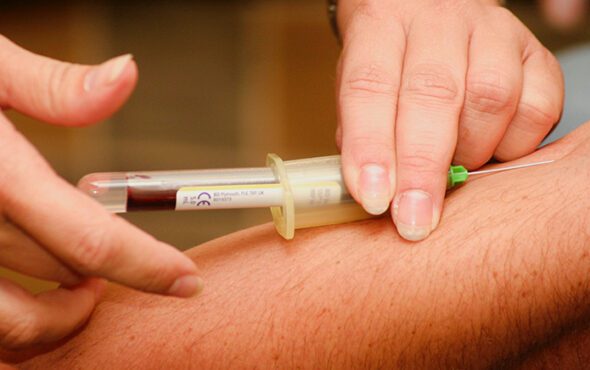
Greece has lifted a decades-old ban on gay and bisexual men giving blood, while France has announced it will scrap rules requiring a year of abstinence from gay sex to donate.
The measures, both announced this week, are the latest in a wave of countries lifting blood donation restrictions on gay and bi men that were often first put in place during the early years of the HIV/AIDS epidemic in the 1980s.
Which other countries are lifting such bans and why?
WHERE ARE GAY BLOOD DONATION BANS BEING REMOVED?
Israel’s health minister Nitzan Horowitz, who is gay, lifted all restrictions on blood donations for gay and bi men in October 2021. He posted a photo of himself giving blood shortly afterwards, writing, “Our blood is equal”.
Other countries which have lifted bans or eased restrictions in recent years include Hungary, Denmark, Brazil and the United States.
In September, the Netherlands dropped a four-month celibacy requirement. Men who have been in a monogamous same-sex relationship for at least a year can now donate, with officials considering easing rules for those without long-term partners.
A similar policy for men in monogamous same-sex relationships came into force the same month in Germany. The new coalition government has since said it plans to do away with all remaining restrictions on gay and bi men donating blood.
WHY ARE SUCH BANS BEING LIFTED?
Many countries introduced blood donation controls during the HIV/AIDS epidemic in the 1980s when infected blood – much of which was donated by drug users and prisoners – contaminated supplies and put recipients at risk of infection.
However, since then technology to check blood for potential issues has improved, and donations are systematically screened for viruses such as HIV and hepatitis B and C.
Some countries have dropped bars on gay and bi men giving blood entirely, with states such as Italy moving to individual risk-based assessments that treat gay and heterosexual people equally.
Meanwhile, LGBTQ+ campaigners have decried bans and abstinence periods for gay and bi men as discriminatory, saying they reflect stigma and stereotypes rather than science.
The first wave of the coronavirus pandemic also created pressure to drop sexuality-based bars on donations, after the cancellation of blood drives led to a drop in supplies.
In April 2020, for example, the United States cut a 12-month waiting period for gay and bi men giving blood to three months, having reported a dramatic slump in donations.
New Zealand and Australia made similar announcements in 2020, while Britain said it would move to a risk-based approach, which came into force in 2021.
WHICH OTHER COUNTRIES COULD LOOSEN RULES?
Slovenia, which currently has a lifetime ban on donations from gay men, plans to shift to a system of individual risk-based assessments using questionnaires. Lithuania also plans to introduce a similar system.
Campaigns by LGBTQ+ activists to remove abstinence periods continue in countries such as the United States.
The U.S. Food & Drug Administration (FDA) is funding a pilot study that will enrol 2,000 gay and bi men, whose blood will be tested for HIV and pre-exposure prophylaxis (PrEP), a drug which can be taken to prevent HIV infection.
The study will be used to decide if a risk-based questionnaire will maintain the safety of the blood supply, as it is used to do in other countries.
Countries that still have lifelong bans on gay and bi men donating blood – and no current plans to lift them – include Singapore and Trinidad and Tobago.
Reporting by Rachel Savage; Additional Reporting by Sander Hansen; Editing by Sonia Elks.
GAY TIMES and Openly/Thomson Reuters Foundation are working together to deliver leading LGBTQ+ news to a global audience.



